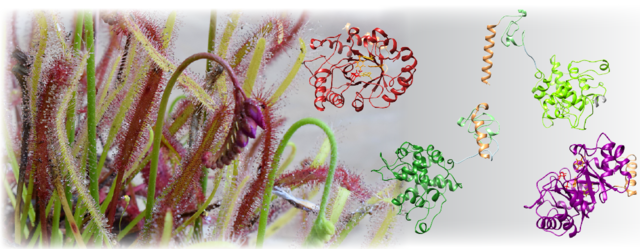
The Weiss and Collins (Physics) groups reported a new method for studying individual proteins in papers published in Science and JACS.
The approach uses nanometer-scale transistors with a carbon nanotube serving as the equivalent of a very small and ultra-sensitive microphone. The investigators, Profs. Gregory A. Weiss and Phillip G. Collins and co-workers, applied the technique to examine lysozyme, a workhorse enzyme responsible for chewing apart the cell walls of bacteria. When the enzyme lysozyme is attached to the carbon nanotube, the enzyme's motions can be observed as electronic, telegraphic noise. The approach allows observation of an individual protein for much longer time periods than conventional techniques, and uncovered new insights into the mechanism of catalysis by lysozyme. For example, the authors reported that the hydrolysis of glycosidic bonds by lysozyme is a processive action. Furthermore, peptide cross-links in the lysozyme substrate lead to a non-catalytic switching, which could indicate zig-zagging by the enzyme across the surface of the bacteria cell. The technique should be applicable to a broad range of other charged molecules. The URL for the JACS article is http://pubs.acs.org/doi/abs/10.1021/ja211540z.
